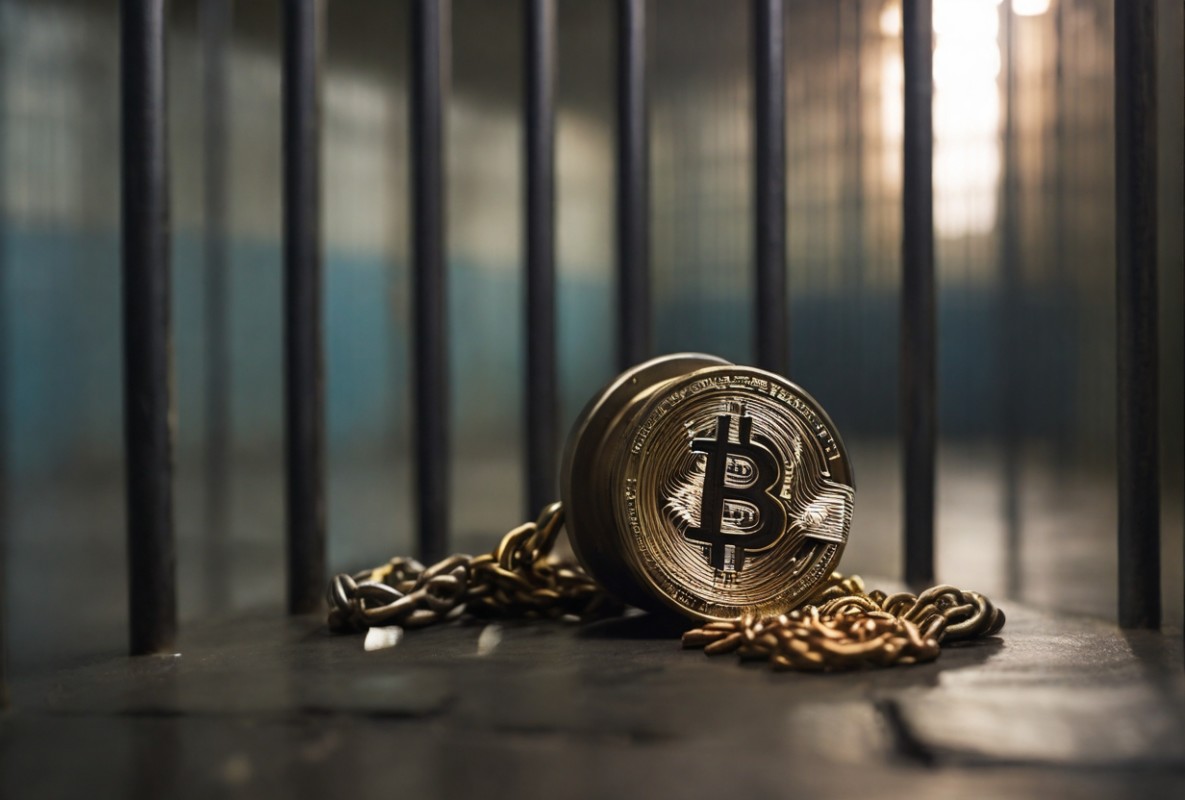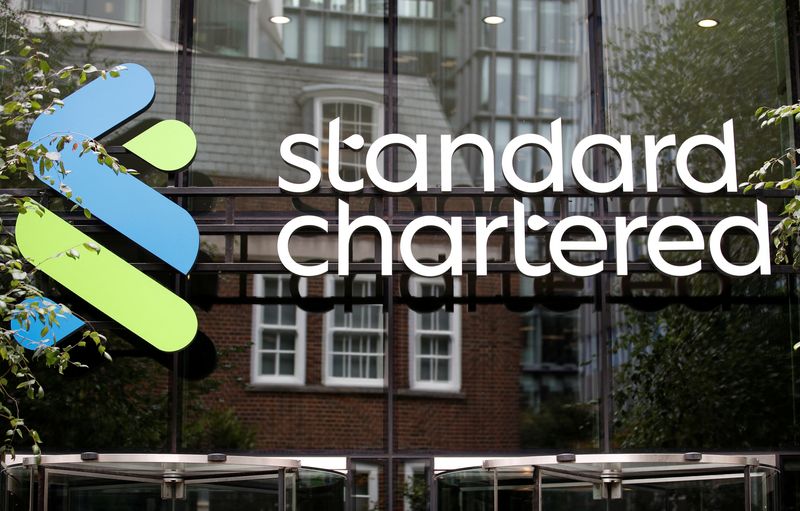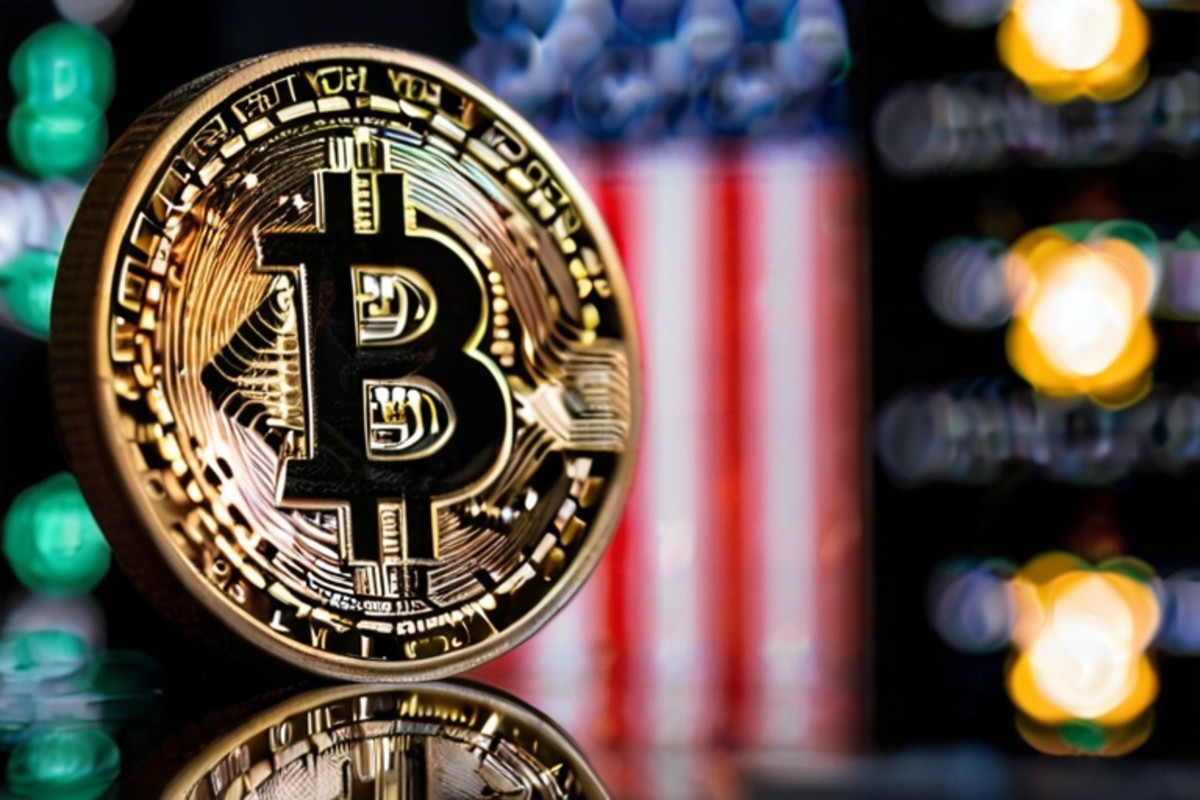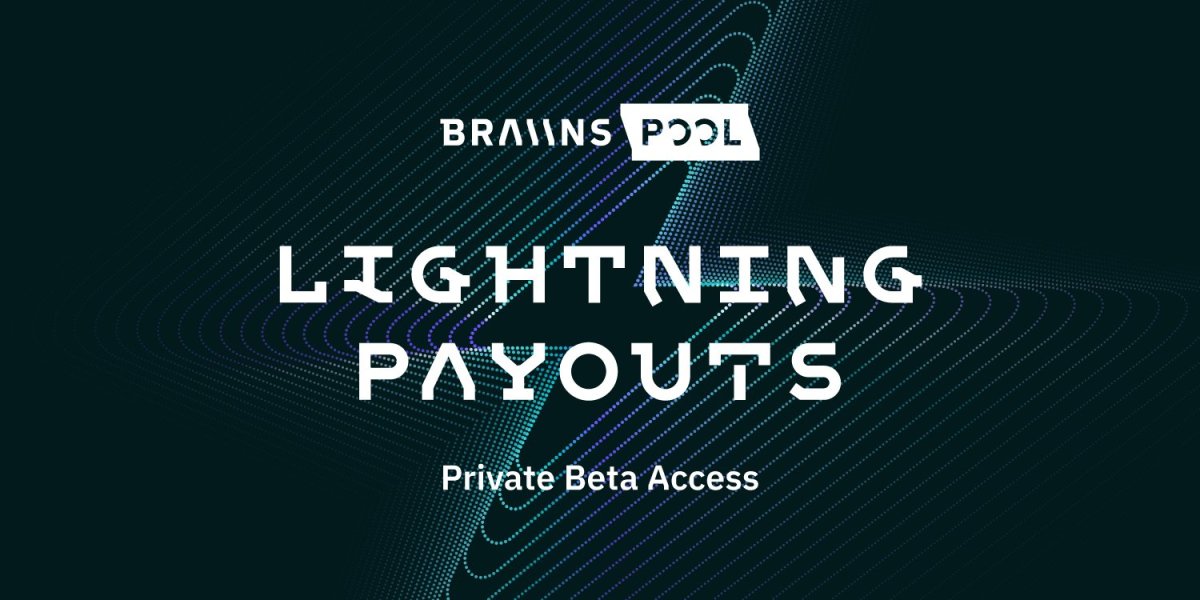Month: February 2024
Second EIA Survey Extension Being Pushed With Open Comment Period
The current EIA Emergency Cryptocurrency Mining Facilities survey held by injunction would require monthly reporting of information from mining facility operators through July 31, 2024. This survey would require the collection of information such as the power price with the power provider, the amount of electricity available under their purchase agreement, the amount of power actually drawn, as well as detailed information on mining hardware such as unit count, hashrate, power draw, and age of mining hardware.
It is spectacular news that this survey has been temporarily halted by Federal District Judge Alan Alright in Waco, Texas, but the final outcome of this lawsuit is still undecided. The next hearing will be tomorrow. It is, in my amateur opinion, very likely that the emergency survey will be permanently halted due to failures to properly follow procedure in the process of moving forward with the survey under emergency grounds.
That would be a spectacular win for the ecosystem, and definitely give miners and the rest of us some time to rally and prepare for other regulatory concerns developing in the ecosystem, but if the case is ultimately decided in that direction it does not mean we are out of the woods yet.
In parallel to the emergency survey, the EIA is looking for a 3 year extension to the data collection requirements under the conventional process with an open comment period. This extension would make no changes to the information requested, or the penalties involved with non-compliance. Regardless of the outcome of the trial in Waco this extension is not part of the emergency survey authorization, and in the process of facilitating the public comment period to my knowledge is not subject to decisions based on the failure to properly follow procedure in initiating the emergency survey. This is still going to happen.
The public comment period is open until April 9, 2024. Comments can be submitted through the Federal Register system here, or by email to Glenn McGrath at Glenn.McGrath@eia.gov.
I highly encourage you to submit comments, especially if you run any scale of commercial mining operation.
Numerous issues exist with the rationalization, but a few large ones include:
What relevance off-grid mining operations have to the purpose of this survey, commercial or otherwise, given their operations have no impact on power prices or grid stability being completely disconnected from the power grid. What risks might exist for private operations not required to publicly disclose information about hashrate inventory or power consumption in disclosing information about their business operations. What merit concerns about grid stability might have overall given the growth and prominence of curtailment strategies and capabilities, as demonstrated in Texas during winter storm Elliot. The fact that the survey followed a prolonged period of overtly hostile messaging from the current Executive Administration using a very questionable basis for justification. The burden this could pose on larger mining operations in regularly complying and maintaining the information necessary to comply with the survey. Why the GPS coordinates of mining facilities are necessary, given the concern is regarding power grid stability and the electrical suppliers are already required information under the survey.
Remember to be respectful, concise, but to the point in any comments. If your intent is simply to meme or make deriding comments towards the agency, this is in no way helpful or constructive. Comments must be submitted by April 9, 2024.
From Dungeons to Bitcoin Billions: Navigating the Ethical Labyrinth of Tim Draper and Ross Ulbricht
The intertwining stories of Tim Draper, a venture capitalist with an unyielding belief in Bitcoin, and Ross Ulbricht, the infamous creator of the Silk Road, present a compelling exploration of ethics, empathy, and the unpredictable nature of the cryptocurrency market. This narrative delves deep into the moral quandaries posed by their unique circumstances, offering a nuanced examination of the implications of their actions and the broader societal and ethical considerations they invoke.
Tim Draper: A Testament to Resilience and Vision
Tim Draper’s foray into the world of Bitcoin was marked by significant adversity before his noteworthy purchase of the bitcoins associated with Ross Ulbricht. Draper was among the many who experienced loss due to the infamous collapse of the Mt. Gox exchange, a calamity that vaporized an enormous fortune belonging to thousands of investors. Draper personally lost around 40,000 Bitcoins, equivalent to roughly $250,000 at the time.
This setback, however, did not deter his enthusiasm for Bitcoin. Instead, it set the stage for his future actions and reinforced his reputation as a staunch believer in Bitcoin’s transformative power. His decision to subsequently purchase 30,000 bitcoins at a U.S. Marshals Service auction in 2014 for $19 million —bitcoins that were once part of the Silk Road’s assets (confiscated from Ross) —was not just a financial investment but a bold statement of his unwavering confidence in Bitcoin’s future. With Bitcoin’s value skyrocketing, Draper’s haul is now valued at an eye-watering $1.286 billion—a staggering 6669% increase. It’s the kind of financial windfall that could make Scrooge McDuck do a double-take.
Ross Ulbricht: The Controversial Figure Behind Silk Road
Ross Ulbricht’s journey from an ambitious entrepreneur to a convicted felon serves as a stark counterpoint to Draper’s narrative. As the mastermind behind the Silk Road, Ulbricht facilitated a platform that revolutionized illicit trade on the dark web. His subsequent arrest and life sentence without parole sparked a debate that transcends legal boundaries, raising questions about innovation, freedom, and the harshness of his punishment. Ulbricht’s case has garnered widespread attention, with many advocating for clemency, highlighting the complexity of his legacy.
The Numbers Game
With Ulbricht’s Silk Road having processed an estimated $9 billion in transactions, and Draper’s investment ballooning to over a billion dollars, the question of financial restitution or support becomes not just philosophical, but glaringly tangible. Ulbricht’s personal Bitcoin stash at the time of his arrest was estimated at 144,000 bitcoins, valued at around $25 million in 2013. Today, the worth of such a hoard would be astronomical, further complicating the moral calculus.
Shared Experiences and Unspoken Bonds
The parallel paths of Draper and Ulbricht converge at a point of mutual loss and resilience. Draper’s financial setback at Mt. Gox mirrors Ulbricht’s loss of his bitcoin stash, confiscated and auctioned by the government. This symmetry suggests a shared understanding of the volatile nature of Bitcoin and the impact of unforeseen events. Draper’s public support for Ulbricht, encapsulated in his passionate advocacy for Ulbricht’s release, hints at a deeper connection, possibly fueled by their intertwined fates in the Bitcoin realm.
Draper’s vocal support for Ulbricht adds layers to this complex tale. In 2019, Draper once passionately advocated for Ulbricht’s release: “Free Ross, baby! Why put these really extraordinary people in jail? We need entrepreneurs like that guy. Get him out of jail…We need their energy and their minds and their force…I’m sure he’s done enough time. Get him out.”. This sentiment highlights a peculiar juxtaposition: a successful investor benefiting significantly from assets once belonging to a now-incarcerated entrepreneur.
The Moral and Ethical Implications
This narrative prompts a reevaluation of the ethical dimensions of cryptocurrency investment and the responsibilities it may entail. Draper’s significant profit from the bitcoins associated with Ulbricht’s downfall—now valued at a staggering 6669% increase—raises important questions about the redistribution of wealth and the concept of moral obligation. The notion of “moral luck,” which considers the role of external factors in moral judgments, is particularly relevant, highlighting the arbitrariness of fortune and misfortune in the digital age.
A Call for Reflective Action
The ethical labyrinth surrounding Draper and Ulbricht’s stories invites us to ponder the nature of empathy, justice, and the potential for philanthropy in the context of digital wealth. Draper’s potential financial support for Ulbricht’s campaign could serve as a powerful gesture of solidarity and a reflection of the nuanced interplay between success and social responsibility in the Bitcoin ecosystem.
The Call for Clemency
Ulbricht’s plight has not gone unnoticed. His petition for clemency has attracted over half a million signatures on Change.org, becoming the largest clemency petition to the President. Figures like Robert F. Kennedy Jr., a 2024 Presidential Candidate, have pledged to investigate Ulbricht’s case, stating, “I will immediately investigate this case when I become president and if I find that Ross Ulbricht was punished as an example, then I will give him clemency. That is not consistent with American justice and it’s wrong.”
A Moral Investment?
In the end, the call for Draper to contribute to Ulbricht’s legal fund or campaign for his release transcends mere financial assistance; it touches upon the very ethos of the tech and blockchain communities. Should Draper, who has profited immensely from an asset once belonging to Ulbricht, feel morally compelled to aid his cause? It’s a question that dances on the edge of ethical investment and philanthropy, teasing the boundaries between profit, justice, and redemption.
A Question of Ethics
As we delve into the complexities of this tale, we must consider our own perspectives on the ethical obligations of those who profit in the realm of digital currency. Should Tim Draper be morally compelled to contribute to the Free Ross campaign, recognizing the shared history and potential for positive impact? How do we quantify fairness in such a situation, and what might a fair contribution look like—perhaps 1% of Draper’s gains, or is there another metric that better balances the scales of justice and empathy?
This discussion transcends the individual stories of Draper and Ulbricht, touching on broader themes of technological innovation, legal reform, and the moral considerations that emerge at the intersection of digital wealth and human rights. What are your thoughts on this ethical conundrum? How should we navigate these complex moral landscapes, and what does this saga teach us about the responsibilities that come with significant financial power in the digital age?
Dollar edges lower, euro gains ahead of key inflation readings
Post Content
Asia FX firms as dollar eases; yen buoyed by sticky inflation
Post Content
Exclusive-StanChart suspends new offshore channel investments by China clients
Post Content
Dollar dips at the start of heavy week of data
Post Content
Layer 2 Is Not A Magic Incantation
A common chant from many in this space these days in response to any discussion of changes to the Bitcoin protocol is “Don’t mess with Layer 1! You can just build it on Layer 2!” This seems like a very logical thing to do, right? Why risk the security and stability of L1 when you can just build on top of it? The problem is this fundamentally fails to understand the relationship between Layer 1 and Layer 2.
An L2 protocol is an extension of the L1. Everything that an L2 is designed to do must ultimately reduce down to what the L1 is capable of. The blanket statement of “just do it on L2!” obfuscates numerous implicit realities of what can or can’t be done on an L2 given the current state of the base layer. For instance, imagine trying to build the Lightning Network without the existence of multisignature scripts. You couldn’t. It wouldn’t be possible to share control between more than one person, and the whole concept of a payment channel wouldn’t be possible.
The Evolution of Payment Channels
The entire reason that payment channels can exist in the first place is because of the fact that L1 of Bitcoin supports the ability for multiple people to share control of a UTXO with a multisig script. What is possible on a L2 is inherently constrained by what is possible on L1; yes, of course it is possible to do things on L2 that aren’t possible on L1, but the ultimately limiting factor of what you can do off-chain is what is possible on-chain. Faster payment confirmation in a payment channel is only possible because on-chain custody can be shared between multiple people.
Even that isn’t enough for a safe payment channel though. The original payment channel had a pre-signed transaction using an nLocktime timelock that gives the funder their money back after so many blocks, and only supported payment channels in one direction. Transaction malleability made these original payment channels unsafe to use. If the funding transaction was malleated by someone before confirming, then the refund transaction would become invalidated and the funder would have no way to claim their money back. The other party in the channel could effectively hold their money hostage.
CHECKLOCKTIMEVERIFY, the absolute timelock opcode, was the solution. CLTV allows you to make a coin unspendable until a certain blockheight or time in the future. This, in combination with the ability to make scripts that can be spent in multiple ways, allowed the multisig UTXO to have a script path where the funder could spend all of the funds themselves after a timelock. This guaranteed the funder would be able to claim the money back in a worst case scenario even if the funding transaction was malleated. The channel could still only facilitate one-way payments though.
In order to facilitate two-way payments, a proper solution to transaction malleability was necessary. This was a huge motivator for Segregated Witness. A timelock is all that was necessary for a one way channel because the money only increased in one direction. The only risk to the sender was that the other party would never claim what they have already been sent on-chain, leaving the rest of the sender’s money trapped. The timelock refund both gave the receiver the incentive to claim funds on-chain before the timelock, when they would lose all the funds they had already been sent, and the sender a worst-case recourse in case something happened to permanently knock the receiver offline. Script does not support enforcing certain amounts to certain future scripts, so a pre-signed transaction is the only viable initial refund mechanism if payments are to flow in both directions. This reopened the risk of funds being held hostage.
With the upgrade to Segwit, this problem was solved. In place of the timelock refund incentivizing honest behavior, the penalty key was introduced. Because the funds in a two-way channel can flow back and forth in each direction there will inevitably be a case where both sides had more money in a prior state of the channel than the current one. By establishing a branch in each channel state’s pre-signed transaction using a penalty key, users can exchange these after signing the new state and know if the other party tries to use an old transaction they can claim 100% of the funds in the channel. Timelocks are used to guarantee the normal spending path where users take their respective balances isn’t valid for a time to give channel parties the chance to use the penalty key if necessary. There’s a problem with this though, using CLTV means that at some point in the future the channel has to close or else the timelock will expire and you no longer have that safety period to penalize the dishonest party.
Bi-directional payment channels also needed CHECKSEQUENCEVERIFY, or relative timelocks, in order to solve this issue. Unlike CLTV, which specifies a specific time or blockheight in the future, CSV specifies a relative length of time or number of blocks from the time or block that the UTXO using CSV in the script is confirmed in the blockchain. This allowed the safety period to function for penalty key use without requiring channels having to close on-chain at a pre-decided time.
Even this does not give us the Lightning Network though. There is still no way to actually route a payment across multiple payment channels. They can conduct payments in both directions, but only between the two people involved in the channel. In order to route payments across multiple channels you need, you guessed it, other functionality from the L1. Hash Time Locked Contracts are how this is accomplished, and they require both CLTV as well as hashlocks. Hashlocks require providing the preimage to a hash in order to spend the coins. It’s like a signature, except you actually just reveal the “private key” instead of signing with it. This allows the receiver in a Lightning payment to provide a hashlock, and every intermediate channel between sender and receiver create a script that allows spending immediately with the hash preimage, or refunding the money backwards after a timelock. If the receiver reveals the hashlock, everyone can claim the money for forwarding the payment, if not, then the money can be claimed backwards and reversed without finalizing it.
So the Lightning Network as it exists today depends entirely on five functionalities being possible on the base layer of Bitcoin. Multisignature scripts, absolute timelocks, relative timelocks, Segregated Witness, and hashlocks. Without any one of these features existing on L1, Lightning as we know it today would not be a possible L2 we could construct. Its existence as an L2 is entirely dependent on L1’s capability to do certain things. So if one were to, in a world with a Bitcoin that did not support hashlocks, timelocks in script, and no malleability fix, simply go “Just build a bidirectional multi-hop payment channel system on Layer 2! We shouldn’t be messing around with Layer 1” it would be a completely incoherent statement.
The Catch
That said, strictly technically speaking, it still would have been possible to build that bidirectional multi-hop payment channel system in that world without those three features on L1. At a massive cost in terms of introducing trust in other people to not steal your money when they are capable of doing so. A federated sidechain. Everyone could have just set up a federated chain like Liquid or Rootstock and added those features to the sidechain, building the Lightning Network there instead of on the mainchain. The problem with that is, it’s not the same thing. On a technical level the network would function exactly the same, but no one using it would actually have the same degree of control over their coins.
When they closed out a Lightning channel it would settle on a sidechain backed by a federation, i.e. it would just be an accounting entry on top of someone else’s multisig wallet where you have no ability to control those coins on L1. You just have to trust the distributed group operating the federation to not rug everyone. Even drivechains (which ironically itself requires new L1 functionality to be done) is just another form of federation at the end of the day, with some extra restrictions added to the withdrawal process. The federation is just miners instead of people holding private keys.
This is the implicit reality, whether they understand it or not, underlying the reaction “just build it on L2!” whenever someone is discussing improvements to L1. There is the scope of what is already possible to build on L2, which is rather limited and restricted by its own scaling limitations, and then there is the scope of what is not already possible. Everything falling into the latter category is impossible to build without interjecting some trusted entity or group of entities that ultimately is in control of users’ funds for them.
What’s the Point?
“Layer 2” is not a magic incantation. You can’t just wave a magic wand and chant the words, and anything and everything becomes magically possible. There are strict inescapable limitations of what an L2 can accomplish, and those limitations are what the L1 can accomplish. This is just an inherent fact of engineering reality when looking at a system like Bitcoin. You can’t escape it in any way except by degrading the trust assumptions more and more the more flexible of an L2 you build beyond the capabilities of L1.
So when discussions around these issues occur, such as what improvements can be made to L1, two things are of utmost importance. First, those improvements to L1 are almost entirely centered around enabling the construction of more flexible and scalable L2s. Secondly, L2s cannot magically enable everything. L2s have their own limitations based on those of the L1, and to have a discussion regarding changes to L1 without acknowledging the only way around those limitations is to introduce trusted entities is not an honest conversation.
It’s time to start acknowledging reality if we are going to discuss what to do with Bitcoin going forward, otherwise nothing is happening but denial of reality and gaslighting. And that is not productive.
BlackRock Spot Bitcoin ETF Trades over $1 Billion So Far Today In New Milestone
In a significant milestone for spot Bitcoin exchange-traded funds (ETFs), BlackRock’s spot Bitcoin ETF has recorded over $1 billion in trades today alone, according to Bloomberg Senior ETF Analyst Eric Balchunas. This achievement underscores the growing demand for Bitcoin investment products and highlights the increasing acceptance of Bitcoin within traditional finance.
MILESTONE $IBIT has traded $1b worth of shares today so far.. which ranks it 11th among all ETFs (Top 0.3%) and Top 25 among stocks. Insane number for newbie ETF (esp one w ten competitors). $1b/day is big boy level volume, enough for (even big) institutional consideration. pic.twitter.com/1vxW5jhaXT
— Eric Balchunas (@EricBalchunas) February 26, 2024
BlackRock, one of the world’s largest asset managers, launched its spot Bitcoin ETF earlier this year, offering investors exposure to BTC without the need for direct ownership or custody. The ETF’s ability to attract such substantial trading volume in a single day reflects investors’ appetite for Bitcoin as a legitimate asset class.
The $1 billion trading volume signals strong investor interest in Bitcoin amid ongoing market volatility and economic uncertainty. As institutional and retail investors seek diversified portfolios and alternative stores of value, Bitcoin has emerged as attractive investment option.
“Insane number for newbie ETF (esp one w ten competitors),” commented Balchunas. “$1b/day is big boy level volume, enough for (even big) institutional consideration.”
The ETF’s success in reaching the $1 billion trading milestone reaffirms the growing mainstream acceptance of Bitcoin as a legitimate investment asset. And as the spot Bitcoin ETFs continue to grow, they’re are expected to play a big role in bridging the gap between traditional finance and getting Bitcoin exposure.
As soon as markets opened on Monday, Bitcoin began to sharply rise in price, hitting highs not seen since December 2021.
U.S. Monday market open. $BTC bid. pic.twitter.com/SQGXR69weX
— Dylan LeClair 🟠 (@DylanLeClair_) February 26, 2024
Braiins Becomes First Mining Pool To Introduce Lightning Payouts
Braiins, a leading mining pool in the Bitcoin industry, has made a significant stride by becoming the first mining pool to introduce Lightning payouts. This pioneering move marks a notable advancement in the integration of the Lightning Network (LN) within the mining sector.
Introducing Lightning payouts ⚡️
We are excited to be the first mining pool using the Lightning Network.
Our miners can now instantly receive rewards with no minimums or fees. pic.twitter.com/h1GSvxj78D
— Braiins (@BraiinsMining) February 21, 2024
“Our decision to integrate the Lightning Network comes from a deep understanding of the challenges and opportunities within the mining community,” stated Kristian Csepcsar, Chief of Propaganda at Braiins. “We also found from internal research with the mining community that LN was a highly requested feature; miners really love experimenting with cutting-edge technology, and in this case, Lightning could also improve their privacy by avoiding address reuse and enabling them to take advantage of all the Lightning features like lower fees and no permanent information on the blockchain.”
The Lightning Network, a second-layer solution for faster and cheaper Bitcoin transactions, has been increasingly adopted across various sectors within the Bitcoin space. By implementing Lightning payouts, Braiins aims to enhance the efficiency and speed of payments for its miners.
With Lightning payouts, miners can receive their rewards swiftly and seamlessly, avoiding the delays and congestion often associated with traditional on-chain transactions. This innovation not only benefits miners by providing them with quicker access to their earnings but also contributes to the overall scalability and usability of the Bitcoin network.
“We believe that we’ve made a step forward for Lightning adoption; the more users and bitcoiners use Lightning, the more stable and reliable the network will become,” Csepcsar continued. “As the first mining pool in history, we really love the dear old on-chain bitcoin, but we think that Lightning could really benefit miners and also improve the health of the blockchain by avoiding clogging it up with tiny payout UTXOs.”
By pioneering Lightning payouts, Braiins sets a precedent for other mining pools to follow suit, potentially catalyzing broader adoption of Lightning Network solutions across the mining industry. While the public release is expected to go live within the coming weeks, interested miners can request access to this new feature via Braiin’s support desk here.
“We are really bullish about Lightning and think we are only at the beginning,” Csepcsar said. “We’re happy to have deployed one more node to the network!”
The Catalyst That Could ‘Standardize’ Bitcoin
Today in my series called “things people following Bitcoin for the last 13 years have already figured out but I’m presenting as a brand new epiphany”, I wanted to write about a revelation about Bitcoin’s adoption, standardization, and normalization I had this past week. While thinking about what it would take for Bitcoin to receive a massive adoption push in the United States, I was able to think of one such scenario that may not be very far off.
And contrary to what you think, it doesn’t have anything to do with regulation, taxation, accounting standards, or any of the things that are mistakenly talked about as the ebb and flow of Bitcoin adoption on a daily basis. As I learned firsthand while finally doing some research on Bitcoin over the last month, none of those things truly matter. The decentralized nature of the network necessitates that it doesn’t need any of those things to flourish. I noted this in my article last week called “Why I Bitcoin.”
But what I also noted in the same article was that Bitcoin will survive if the people want it to survive. For those who understand the network, they understand that ~20,000 global nodes mean that the network is going to stay up regardless of which politician, jurisdiction, or regulatory agency around the world tries to stand in its way. This is part of the elegance of the network.
And still, having realized that, I think to myself, “What is going to accelerate that adoption so much that we move from now—a point of almost no return for Bitcoin—to a significant point of serious escape velocity?” The answer was right underneath my nose.
When I wrote the title to my article last week called “Why I Bitcoin,” it was just one of those titles that came to me instinctively. Sometimes I spend hours trying to figure out which title is going to be the catchiest, and other times, like with this article, I have the title set out beforehand because it is very clear what I want to say.
But I was walking around over the weekend and wondering where I had heard that phrase before.
Suddenly, it came to me. In one of my favorite comedy skits, a group of Philadelphia improv comedians went to the Occupy protests that occurred as a result of the 2008 economic crash. In more than one spot, there are signs that say “Why I Occupy.” In fact, this was basically the namesake of part of the Occupy movement. I remember that WhyIOccupy.org was the source for quite a bit of the pissed-off populace at the time; they thought whatever ideology was on that website was their particular brand of solution to the financial crisis.
It was only after remembering that, that I thought in the next major financial crisis, people really are going to have a legitimate exit ramp from the system. Bitcoin is that exit ramp. It’s the thing that people involved in the GameStop frenzy were so desperately looking for, whether they knew it or not, but couldn’t find.
While the GameStop fiasco was taking place, I remember thinking to myself that there were too many people who were pissed off but didn’t have any idea what they were angry about. In chat rooms and on social media, everybody was catching blame but the Federal Reserve. These people were pissed off because they felt like they were getting gypped: they were reacting, whether they knew it or not, to the widening of the inequality gap while they were struggling to make ends meet.
But what they didn’t know was that this wasn’t the fault of Ken Griffin, Citadel, or short sellers; rather, it was the fault of the Federal Reserve.
Nowadays, it’s becoming clearer as the Fed shoehorns that inequality gap even wider. It’s clearer because inflation is a mainstream story and a phenomenon that people can understand. Even if they don’t know why inflation is happening, most people have a semblance of understanding that it has to do with the Fed blowing out the money supply over the last four years and then, to add insult to injury, lying to the public about inflation being transitory.
And those who hoped to repeat GameStop’s success with names like AMC now know that toxic management and a loss-making business can very easily take the air out of any momentum in any type of short, or FOMO, squeeze in any one equity. And they also know that brokerages and regulators can prevent them from transacting in it anytime they damn well please.
During the next major financial crisis, which, in my opinion, isn’t that far away, the same group of pissed-off “have nots” will hopefully direct more of the blame where it belongs: monetary policy. After all, inflation is a brutal tax on the people who can’t afford it and is all but meaningless for the super-rich. And, the super-rich get super richer as a result of quantitative easing and money printing, which directs a disproportionate amount of relief to the stock, bonds and housing market: assets that rich people have that lower-income people do not have.
I would often ask during the Fed money printing over Covid, that if the Fed wanted to print $5 trillion, why wouldn’t they just divide it up evenly amongst all people in the United States and cut us all a check? After all, $5 trillion divided by 300 million people is about $16,500 per person. Putting systemic reasoning aside, this is a fairly simple straightforward question. If you want to stimulate the economy by spraying money all over the place, why not do it equally amongst all of its citizens, instead of playing favorites?
But that isn’t what happened in 2008, and it’s not going to be what happens during the next financial crisis.
What I do think will happen, however, is a new group of “have nots” and economic renegades will be exponentially more informed about how monetary police works, not just as a result of the GameStop fiasco, but also as a new, younger generation has familiarized themselves with the ideological case for Bitcoin. Before I even took to Bitcoin, one of the things I liked about it was the idea that it was forcing a younger generation to understand Austrian economics in a world where we have all but overused and beaten to death our modern monetary theory privileges. Armed with this new knowledge, an entire new generation of pissed-off, regular people will once again bear the cost of socialized losses from nefarious, toxic companies who privatized their profits. And this will be within an inflationary crisis still fresh in their minds. This time there will be no question about who is eroding the purchasing power and the wealth that they have worked for through taxation and inflation.
Which brings me to my point: Bitcoin could very well be the exit ramp that millions of angry people look towards in such a situation.
Unlike with GameStop, Bitcoin actually does have the chance to affect major change because the network’s success is tethered to how large it grows. This means that with every single person who decides to own, or educate themselves about, Bitcoin, they become part of a self-fulfilling prophecy of the network’s success. And, of course, the ideology behind the success of the network is firmly rooted in empowering people just like them: the people who are tired of having what little they earn silently whisked away from them by the dark inflationary financial machinery of the night.
Many people who participated in the GameStop frenzy, including the “apes” over at Reddit’s Wall Street Bets and millions of other retail traders, will be forced to realize that Bitcoin has all of the positives of what they sought to achieve in the past without the negatives. There is no management to mess it up, there is no counterparty to dilute them, there is no one to turn off the buy button and there is essentially no governing or regulatory body to prevent the network from being a success if the people want it to be one. It becomes the digital freedom that all of these people sought out during the last financial crisis but had no effective way to manifest.
2008 was yet another echo of what has become par for the course on Wall Street: every time things get catastrophic, the public bears the cost, gets pissed off and brandishes the torches. But then it eventually blows over and people go about their business.
“I’m starting to feel a little better about this whole thing,” John Tuld says at the end of Margin Call, signifying that the more things change, the more they stay the same.
Bankers and politicians have been relying on this pattern to play out the way it has in the past in order for them to continue to perpetuate the same scheme they’ve been part of for decades. It is, in essence, what enables the miscarriage of justice of everyday Americans bearing the cost of failures of the ultra-rich.
And so, the next time this happens, the investing public could legitimately have a chance to break that cycle for the first time in half a century by adopting Bitcoin. It has a chance to opt them out of the system that they have railed against. Capital flows into Bitcoin and out of traditional financial assets will send a message to major financial institutions who only respond to the opportunity to make fees (see their newfound obsession with Bitcoin now that there’s ETFs for reference). At the same time these flows could add to the self-fulfilling prophecy of the network becoming a success, due to its redundancy essentially serving as the barometer for the health of the network.
It is by no means guaranteed, but if the system ever goes belly up again, and the average person is looking for a true weapon to fight the system – and one that is literally programmed to be the technological braille of the phrases “there’s safety in numbers” and “power to the people,” Bitcoin could shine through and open an epoch for itself that be seen in the future as its adoption Renaissance.
This is a guest post by Quoth the Raven. Opinions expressed are entirely their own and do not necessarily reflect those of BTC Inc or Bitcoin Magazine.









